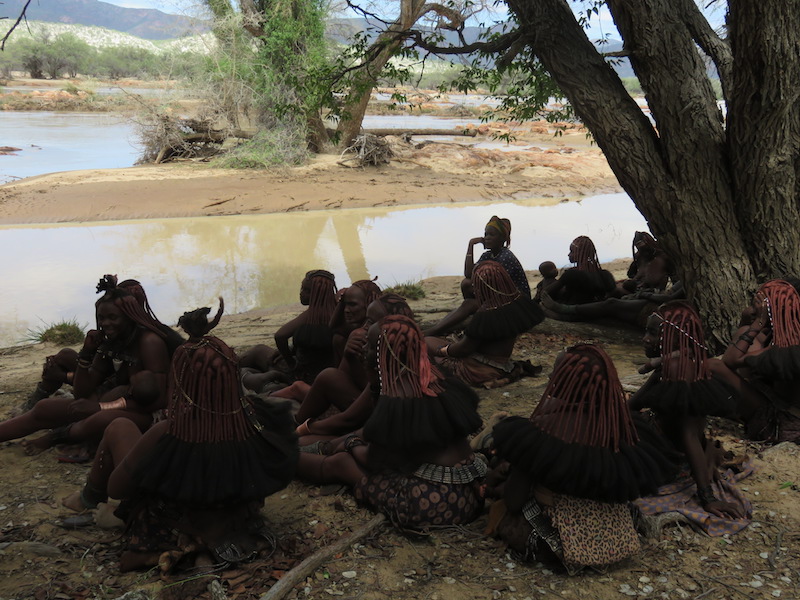For centuries, the Kunene River – one of just five perennial rivers in arid Namibia – has supported the semi-nomadic Himba, one of Africa’s most successful remaining pastoralist peoples. The proposed Baynes Dam threatens to destroy the Himba’s livelihood and culture, flooding 57 square kilometers of tribal lands, including ancestral graves and critical riparian ecosystems.
“The Kunene River is a living organism and needs to be protected. If Baynes Dam is built, everything will die under the water. We don’t want that. Baynes Dam will affect us and our grazing area; farming is our livelihood. Different species, wildlife, most graves will all be under water.”
– Himba community member, Koporukaku Rutjindo, in Omunhonga, Kunene Region-Namibia [Source]
Background
The Kunene River valley is the ancestral home of the Himba people, who have lived there for more than 500 years. An ancient, semi-nomadic pastoralist people, the Himba’s economic independence is directly linked to the land and their livestock: They have retained their way of life as cattle, sheep and goat farmers with herds of hundreds of animals per family.
After successfully opposing the proposed Epupa Dam in the 1990s, the Himba once again face the threat of displacement by the proposed 600 MW Baynes Dam, which would flood 57 square kilometers of tribal lands. The Namibian and Angolan governments hope the dam will help them reduce their reliance on imported electricity and fossil fuels, but better alternatives exist, including abundant – and less destructive – solar and wind resources.
Threats to the Kunene River
Damming the Kunene would threaten the river’s water quality and its aquatic habitats, sediment load and nutrient concentrations, which would have ripple effects on downstream habitats. The reservoir will displace or drown ground-dwelling animals, while bird populations will likely lose both nesting and foraging habitat.
The Intergovernmental Panel on Climate Change (IPCC) has identified Southern Africa as one of the world’s regions most vulnerable to climate change: It will face some of the most variable rainfalls and stream flows in the world. Hydropower projects depend on predictable flows; increasing reliance on hydropower would send power outages skyrocketing across the country.
What’s At Stake
Planners have failed to consult with Himba communities or obtain their free, prior and informed consent. The Baynes Dam would inundate Himba homesteads, cattle posts and grazing lands, threatening their economic independence and cultural survival. The Himba “want to remain in our culture like our forefathers….The land is our bank. We don’t go to the ATMs; the money is in our land, and forest, and livestock.”
The Kunene River is a lifeline for birds and animals (both terrestrial and aquatic) in an arid region. The Kunene River mouth is one of Namibia’s most diverse bird areas, supporting a total of at least 119 bird species.
With a conservative price tag of $1.3 billion, the Baynes Dam would be extremely costly for the amount of power it would produce. It is expected to generate only 1,610 GWh per year, making it one of the least efficient hydro projects in the region – and chances are good that its true cost will in fact double. This would be a waste of precious development funds.
Namibia’s energy access stands at 53.9%; Angola’s energy access is even lower, at just 43.3%. Investing in decentralized solar and wind development is likely to reach more people at a lower cost.
Quick Facts
- The Kunene River is one of just five perennial rivers in arid Namibia, and is considered a precious resource by the semi-nomadic Himba people, who first settled in the region in the early 16th century.
- The Kunene River mouth is one of Namibia’s most diverse bird areas, with a total of at least 119 bird species including 8 resident waders, 22 palearctic waders, 32 wetland, 19 marine and 38 non-wetland bird species. [Source]
- The proposed Baynes Dam would be one of the least efficient hydropower projects in the region, with a conservative price tag of $1.3 billion; it would generate only 1,610 GWh per year.


